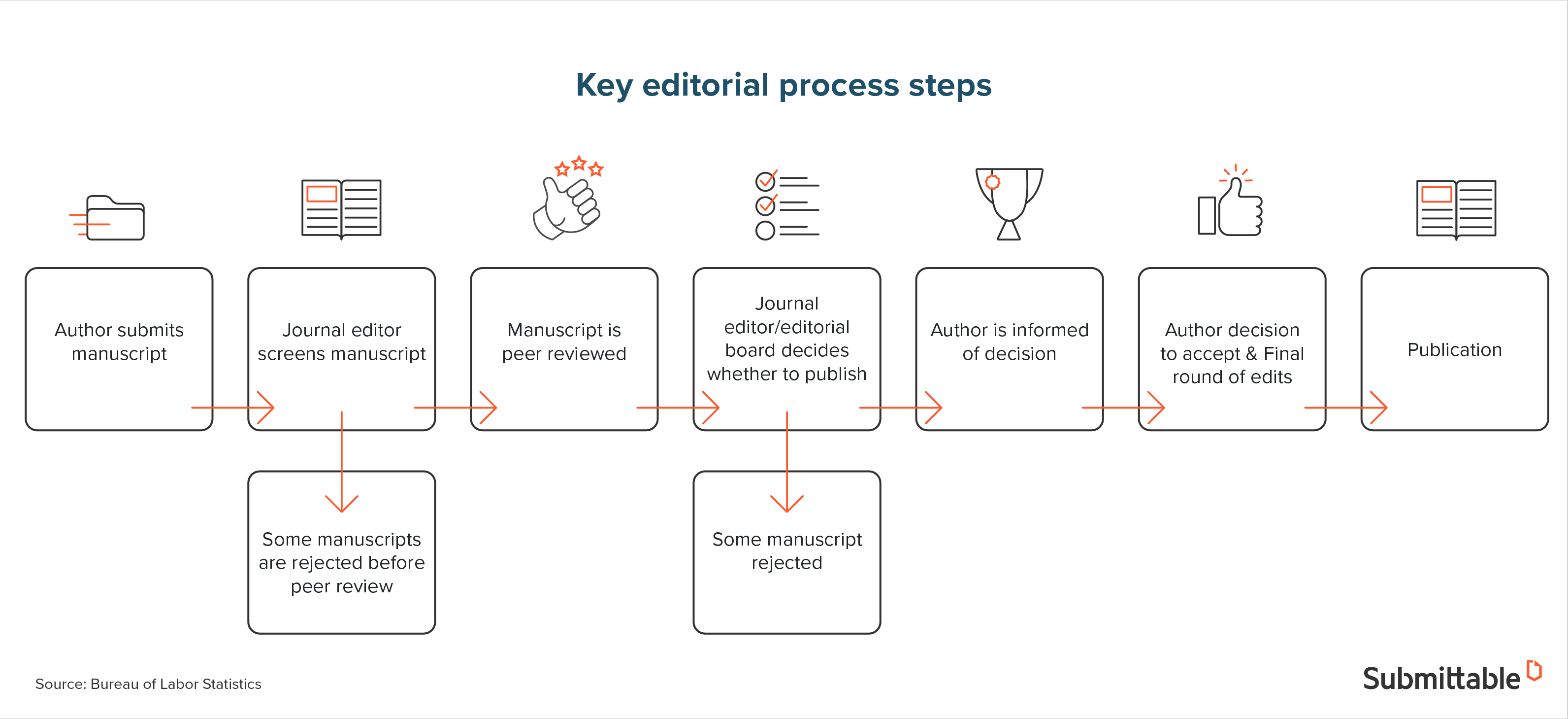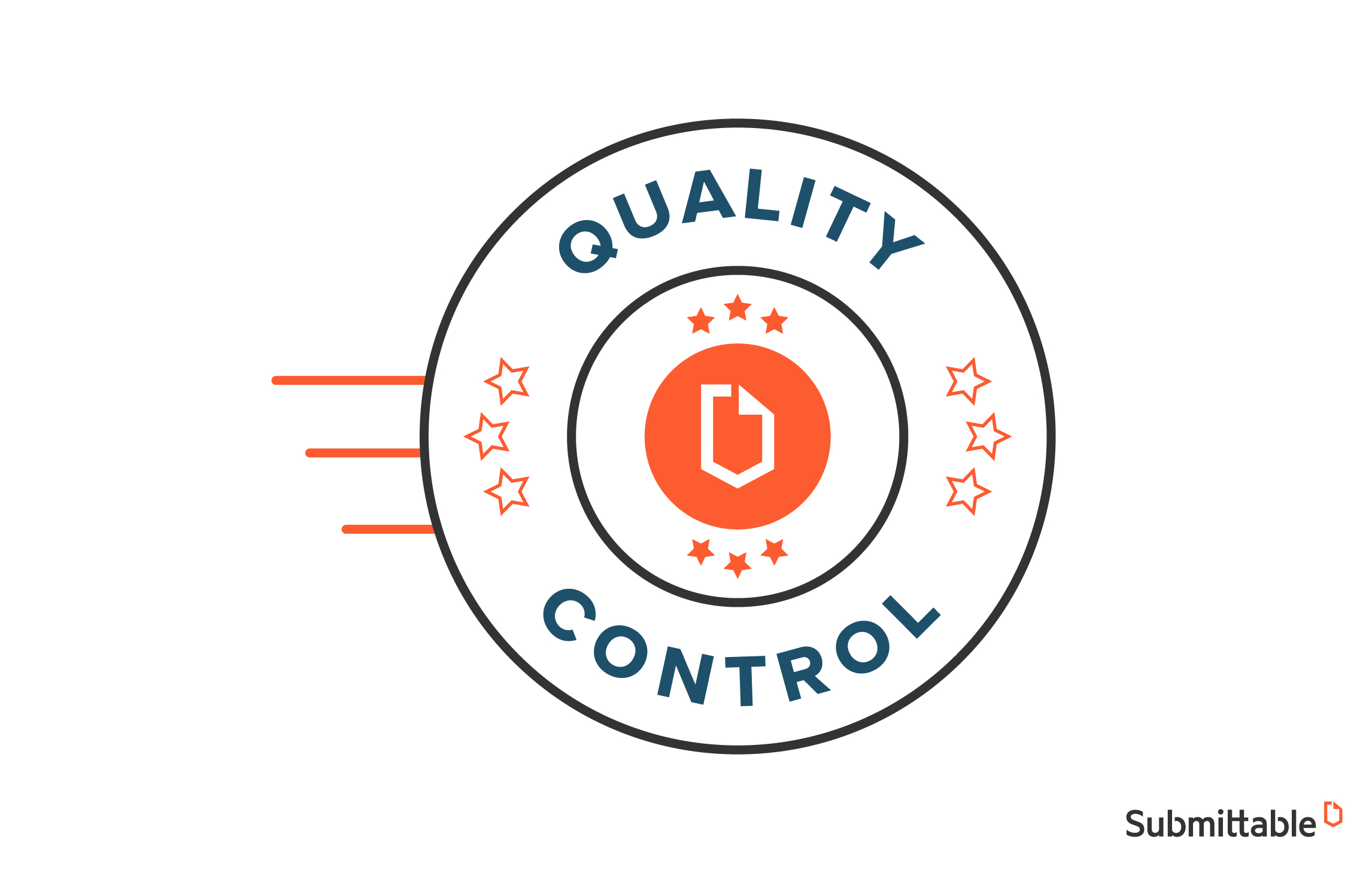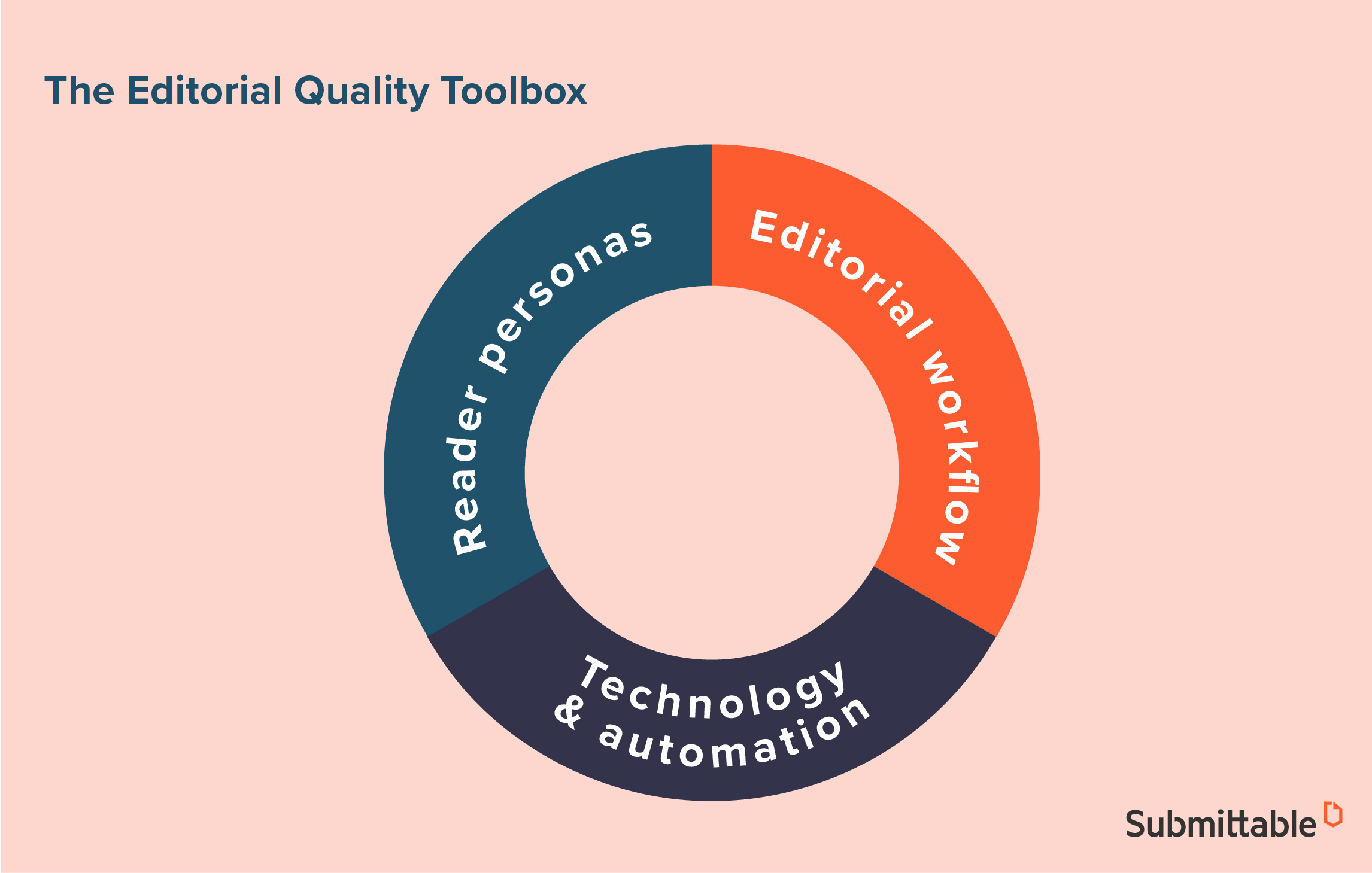With the rise of the internet and the establishment of digitized publishing, the number of submissions to almost any publication has increased exponentially. It’s never been so easy to reach large groups of like-minded people and encourage submissions.
However, the benefit of digitized media has a flip side – open submissions can mean a glut of lower quality material. With so much clickbait content and day-long shelf lives, how can confidence in editorial quality be restored?
How your editorial process can affect editorial quality
For publishers, maintaining editorial standards and getting publications out on time now presents new challenges, as the slush pile can be vast, and the work needed to prepare material for publication more intensive.
For writers, the field may be more competitive, but there are also more opportunities than before. However, with the push for content to “perform well on social,” writing for clicks is being thrust upon many new writers, leaving more seasoned journalists feeling adrift.
For editors, the sheer volume of raw content can be overwhelming, and that same demands for clicks can warp their ability to maintain high quality. How can the editorial process be supported and faith in high-value publishing restored in an age of ephemeral content?
Editorial quality – the value of the publication
The quality of material published is, in the end, the yardstick by which a publication will be measured. The editorial process must be impeccable, regardless of the subject matter of the material going to press.
Academic publishing
Academic publishing can be one of the most challenging industry verticals, with pressure for academics to publish, resulting in quantity over quality for many journals that don’t have resources to provide robust editorial support. Peer review processes can also be long and involved, causing bottlenecks in publication schedules.
Digital publishing
For digitized publications that serve as online versions of longstanding printed magazines or newspapers, the demand for “eyes on” can cause an unintentional emphasis on sensationalism over facts, and controversy over the content. This can also dilute the reputation of a publication.
When the focus is on views rather than quality publishing, the perceived “need” for editorial processes can be diminished. The result is high volume “churned out” content which can rapidly cause more discerning readers to walk away from an entire publication.

Key editorial process steps
To restore editorial quality (as well as faith in the publishing process), put clear steps in place to create an editorial process focused on promoting high-quality output. The following steps can be invaluable to winnowing out the chaff from the wheat when it comes to massive incoming submission volumes.
Pre-check
The pre-check is the initial gate, which many submissions will not pass through.
- Have you received any and all additional information requested to accompany submissions?
- Is the manuscript compliant with the publication’s guidelines for authors?
- Has the submission been formatted in line with publication requirements?
- Does the submission meet selection standards?
Initial screening
The initial screening is the second gate, which can also knock many submissions out of the running.
- Does the submission fall within the publication’s scope?
- Will the submission be of interest to the publication’s readership?
- Can the manuscript exceed a minimum acceptable standard of quality for review?
- Is the authorship of the submission verifiable?
- Are there any plagiarism concerns?
Peer review
Peer review is more common for academic journals than for other published media, though many publications utilize some form of group review near the beginning of the submission process.
- Two to six peer reviewers will typically be asked to review each submission.
- Best practices recommend removing all identifying information about the author from submissions.
- Reviewers should be experts on the subject matter they are reviewing.
Revision
In academic settings, the submission may be kicked back to the author for revision before submission to the editor.
- The submission may or may not be required to go back through peer review.
- Typically, two rounds of revisions are the maximum requested before acceptance or rejection.
Editor decision
There may be one editor who has the final decision or an editorial board that makes a collective decision.
- The manuscript will be checked to ensure all revision requests have been met.
- The material will be reviewed to ensure that it meets the standard for publication.
- The content will be checked a final time for any potential plagiarism.
Author notification
Editor(s) can reach out to submitting authors to include them in the editorial process.
- Authors are notified and involved in one round of edits.
Production, proofreading, and publication
At the end of the editorial process, production takes over. This process will manage
- Layout editing
- Language editing
- Indexing
- Formatting
Correction and Retraction
In case a correction or retraction needs to be made, the process will depend on the publication
- Academic journals: published separately at the end of each issue
- Magazines or newspapers: published in subsequent issues
- Digital publications: published as an update at the top or bottom of the page

Editorial quality control: elements of a strong editorial QA process
To institute a robust editorial quality assurance process, more internal steps must be laid out in advance. It is recommended that chosen editors be asked for their input on what can be done to make workflows easier.
Content plans and editorial calendars
Content required for upcoming publication dates should be determined well in advance to leave time for editorial and publishing processes. A three to six-month window is adequate for most publications, although the lead time may be stretched to a year for highly researched content that will require meticulous fact-checking and review.
Creative briefs
Creative briefs, the high-level document explaining the goals and deliverables for your project team, should be clear, well laid out, and standardized across the publication. Rules for sourcing and citing should be included, as well as the preferred style guide. Briefs can play a vital role in shaping your project, ensuring all those involved understand its targets and voice.
Trained copywriters
Whether copywriters are freelance or in-house, assigned content should be given to the candidate with the most extensive knowledge of the topic, and (if possible) a track record of similar publications. Exceptions may be made on a case by case basis when attracting new talent. Working with specialized copywriters can help you achieve your desired content results, with fewer rounds of edits.
Rigid deadlines
Deadlines must be set in stone and only extended in extreme circumstances. Submissions should be in on time, with edits done in a timely manner to ensure no delay or corners cut before publication that could detract from the overall quality.
Editorial consistency
Adherence to the style guide is even more critical for editors than writers. The Editors should not only be consistent in their own process, but each editor should be similar to the others in terms of technical edits to avoid frustration, or mixed signals being sent to submitting authors. Maintaining your editorial voice ensures that your publication meets – and often exceeds – your desired quality goals.
Multiple editorial layers
A second, third, (and sometimes even a fourth or fifth) pair of eyes can lead to higher quality content and help avoid embarrassing mistakes or on the part of the publication. A resting period between reviews can also help bring a fresh perspective if an editor is responsible for multiple review steps.
Decisions
Decisions should include an automatic notification to the author, whether it is an acceptance, rejection, or request for revision. If writers are to be expected to respect the processes put in place by the publication, the publication should offer the same respect regarding their time investment.
Complaints & misconduct
A clear complaints & misconduct process should be laid out for dealing with any allegations or accusations of wrongdoing. Claims of plagiarism should be handled with extreme care, as an author’s reputation can be harmed unduly even by an unsubstantiated report. Complaints of bias or harassment regarding editors should be taken seriously while being handled with extreme care to ensure quality outcomes are met during the process.

Tools and tips for a successful editorial strategy
Crafting an effective, productive editorial strategy designed to produce quality of the highest possible caliber can be a challenge. Consider the following to streamline and error-proof your processes:
Work from user personas
While it can feel natural to work with an eye to what people above you in the process may think, it’s also important to look down the chain and consider how the process is working for those submitting. If the process is too arduous, the number of submissions will go down. Likewise, consider the reader, and their perception of the value of not just the piece but the publication as a whole.
Create style guides, project instructions and brand briefs
The more guidance you give, the more likely your publication is to receive submissions that meet your specifications. Keep style guides as simple as possible; a “house guide” should be based on a well-known guide with only minor departures. Project instructions should be logical, sequential, and easy to follow. Brand briefs should be direct, free from fluff, and able to quickly and accurately inform the reader.
Define and adhere to a workflow
It’s worth taking the time to lay out a clear workflow and maintain it by assigning responsibility for each step and demanding accountability from publication staff, including the editorial team. To facilitate adherence, providing the appropriate tools is key.
Use automated editorial calendar tools
There are many editorial tools available to enable collaboration and create workflows.
Submission software for publishers and journals can provide you with a single platform from which you can:
- Create customized forms for new projects or calls for submissions
- Ensure submission guidelines be followed via mandated form fields
- Accept, organize, store, retrieve and review submissions on demand
- Make and read notes, and collaborate with editors and reviewers
- Update files in the system, streamlining the review and revisions processes
- Automate interactions, including submission confirmation, process updates, and acceptances, revision requests, or rejections
Centralizing and automating the editorial process is about more than the implementation of technology. It’s about bringing a qualified team together on a single platform to facilitate the acquisition, selection, and refinement of content through a clearly defined work process.
The result is a publication that meets the highest standards of quality while surviving in a landscape that becomes more competitive with each passing month. Even if the content itself has a limited shelf life, you can cement its impact with a superior level of professionalism.
Consider a publishing and journals submissions solution that can take ideas from first pitch to final publication, streamlining, clarifying, and facilitating each step in the process. By better managing your workflows, you can improve the quality of initial submissions, raise editorial standards, and create a publication you can be proud of.
Protect your editorial quality with the right technology
Submission management software helps publications and journals cut through the onslaught of submitted works with ease and dexterity.
Find the right solution for you with our Ultimate Guide to Purchasing Submission Management Software.
